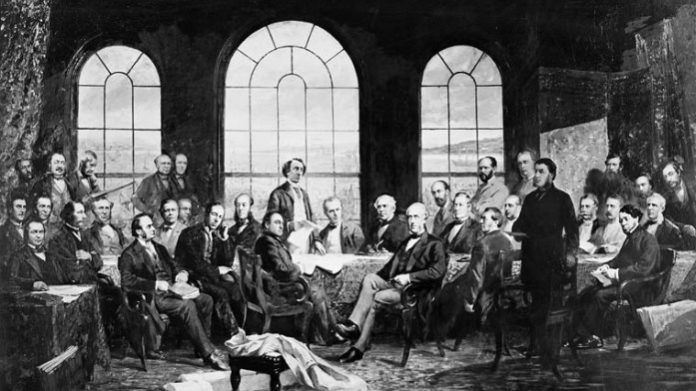One hundred and fifty years ago, Queen Victoria approved the British North America Act and set July 1, 1867 as the date for uniting the Province of Canada (now Ontario and Quebec), New Brunswick, and Nova Scotia as one nation. Canada was born.
At R2R, we’re proud of our great nation and we’re not afraid to show it!
But things were a little different back then…
Health and Medicine
Smallpox epidemics ravaged the country and, although the smallpox vaccine had been introduced, public resistance was intense. This was probably because public health was not a major concern. It wasn’t until the late 1800s that public sanitation measures became widespread.
Antiseptic surgical techniques had not been adopted yet. When not using their knives, surgeons often held them in their mouths to free up their hands.
And if you were a woman, sorry – not only could women not vote, but they were also not allowed to attend medical school.
Energy, Environment, and Nature
In 1867, Canada was still in the steam age. There was no electricity and most energy came from organic sources like animal labour and wood. CO2 levels were still around 280 parts per million and the term “global warming” was not part of our vocabulary.
Lumber export was one of the most important revenue streams, with hundreds of thousands of loads of lumber going to Britain from Canada each year. Deforestation was widespread as settlers cleared the land.
Space and Quantum
The Canadian space program was non-existent. Actually, physical exploration of space was not even considered possible yet. The first telescopic photo of the moon had just recently been taken.
And as for quantum mechanics… what’s that?
Science and Society
Child labour was still common and a typical working day was often 12 hours! The working class wage was low and most of the working class struggled to maintain food, clothing, and shelter.
The establishment of government scientific organizations was just getting started and peer review, although established in Europe, did not exist yet in Canada.
Let’s celebrate!
Canada has come a long way in 150 years and, at R2R, we want to share with you the discoveries and movements that brought Canada from then to now.
Stay tuned to the blog for monthly #Canada150 posts celebrating our scientific achievements over the last 150 years.
Follow the hashtag #150scientists on Twitter to meet 150 Canadian researchers that are working hard to make our world a better place.
Check back often and celebrate Canada’s milestone birthday with us!








































